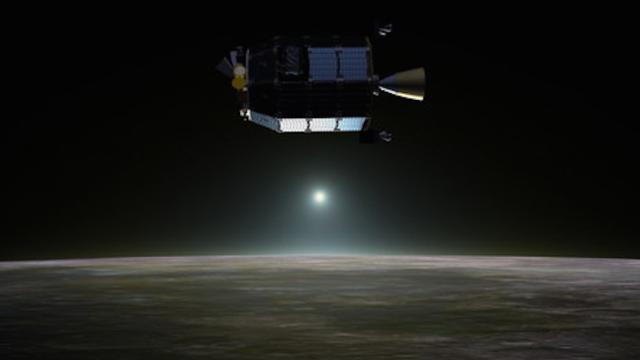Later this month, a NASA spacecraft will get one last chance to solve the mystery of the strange “horizon glow” seen on the moon. Scientists think the glow is caused by tiny particles of moon dust catching the sun’s ultraviolet rays, becoming electrically charged, and then shooting upwards. But they don’t know for sure.
This is hardly a new mystery. The phenomenon was first discovered by NASA’s Surveyor 7 mission in 1968, and it was also observed by Apollo astronauts who described the effect as “streamers” flying into the sky. Nearly half a century later, the space agency sent the Lunar Atmosphere and Dust Environment Explorer (LADEE), specifically for the purpose of unravelling the mystery.
“Dust is a very difficult environment to deal with on the moon,” Butler Hine, LADEE project manager said at the time. “It’s not like terrestrial dust. Terrestrial dust is like talcum powder. On the moon, it’s very rough. It’s… kind of evil. It follows electric field lines.”
But LADEE’s been up there a decade, and we still don’t know exactly what that “kind of evil” dust is doing. The spacecraft gets one more chance to attempt to replicate the angle and conditions from which the astronauts originally witnessed the glow, before falling to the surface of the moon, where it will vaporise. And if LADEE comes up short, well, the mission only cost $US280 million. [Nature, NBC News]

Picture: NASA Ames / Dana Berry
